How Government Agencies Can Engage With Their Communities on Social Media
Government agencies are rethinking how to connect with their communities. With public events off the table, social media has become the new “place” to gather and a source of information. And each social media channel has its own advantages and offers different ways to connect.
If your agency is public-facing and has been apprehensive to participate in social media, or haven't figured out just how to do so, we have some recommendations. There are many ways to offer local news updates, information about events or timely happenings, and a peek behind the scenes of their local government. It can be an opportunity to spotlight your staff and the crucial work that you’re doing.
Here are a few ways government agencies can use popular social media channels to better engage with constituents.
One of the best places to share new information is Twitter. It’s a great place for citizens to get quick, bite-sized updates, such as updated office hours, wait times or service interruptions. Twitter is especially useful when discussing breaking events with developing situations.
Public emergencies or natural disasters are great examples of when people are searching for the latest information. During the 2020 Western U.S. wildfire season, large blazes threatened many local communities. A county in Oregon shared information to help connect people with evacuation and recovery services.
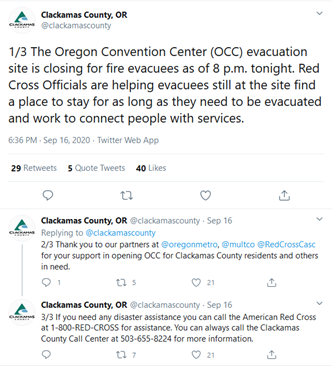
Twitter also gives the opportunity to transparently engage with citizens. These communications can be simple: replying to comments, thanking citizens for retweeting or responding to direct mentions. Interactions like this humanize the agency or department. When consumers have personalized customer service interactions with a business, 77% are likely to recommend the brand. This same approach can be used by agencies to build trust between them and their community.
We recommend making regular searches on Twitter for your area — what are people in your community talking about? Do there seem to be common areas of concern? Post resources to address them. You can also use Twitter to fight disinformation, if inaccurate information is being shared, whether it’s about COVID-19 or the election, one tweet can help break through the noise.
For school districts, Twitter can be especially effective. You can spotlight staff, share schedule changes, resources for printing, wifi and more. Perhaps it’s the latest updates on free lunch pickup. You can also share news pieces about your district’s sports teams and standout student-athletes.
From community discussions to media albums to virtual conferencing, Facebook allows agencies to get creative in how they interact with their constituents.
Facebook Live gives agencies the opportunity to have live interactions with their communities on video. Viewers can react, comment and share in real time, and agencies can quickly respond to questions and concerns. These virtual public forums are more important than ever when physical ones aren’t possible.
It doesn’t always have to be serious business either. When Phoenix, AZ. celebrated its 135th birthday, the city’s official Facebook page created an album of historical photos of Phoenix. It had strong engagement and became the city’s most shared album.
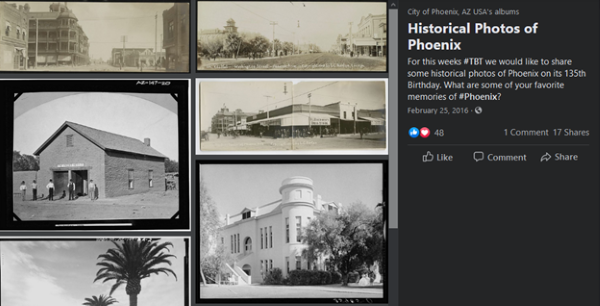
Facebook Messenger can be used to directly answers questions from people in your community. For example, maybe they have a detailed question about how to submit their ballot that needs a more thoughtful answer.
We recommend going live on Facebook with an elected official to talk about how you can vote safely this year. Or schedule a live video with your department head to talk about some of the achievements you’ve made in 2020, and what you have planned for next year.
Instagram is great for sharing cultural, image-rich content from your department or agency. Agencies that are opening new offices or branches, celebrating holidays or local events, or showing progress on community construction efforts have incredible engagement opportunities on Instagram.
Instagram is a good channel for highlighting fun, behind-the-scenes happenings or accomplishments. For example, the City of Houston’s Instagram account frequently supports the city’s sports teams and its city employees.
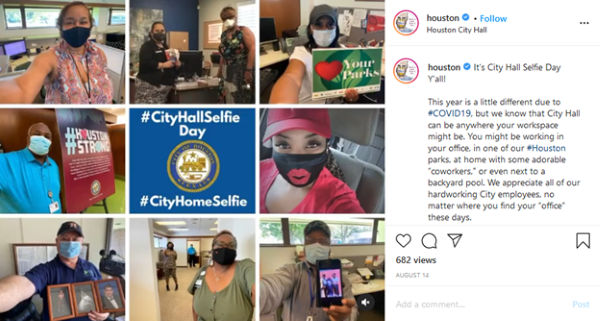
Like Twitter, Instagram is a useful tool to help stop the spread of disinformation relevant to your community, especially during an emergency.
We recommend running a virtual community pumpkin carving contest or Christmas cookie decorating. Do a “day in the life” post and have a staff member share an Instagram Story on what their day looks like. People love to see a behind-the-scenes look at their local government and public agencies. This is a great chance to provide that view.
Capturing and archiving social media
But remember — while the timeliness of your agency’s social media content may be fleeting, the content itself isn’t. Social media on an official government account is considered an electronic record. As a public agency, you must keep in mind that your social media communications — including all posts, reshares and direct messages — need to be available for public record requests.
It’s not enough to rely on the social media channel to retain your agency’s posts on their servers. And it’s a lot of work to dig through old posts on several accounts to gather a complete record when requested. Your agency needs to be able to capture and archive its activity and content comprehensively and present it quickly upon request.
It’s important to stay engaged and have fun, but having this information fully preserved is also an obligation to your community and a major time-saver when a public records request comes in.
Share this post!
Smarsh Blog
Our internal subject matter experts and our network of external industry experts are featured with insights into the technology and industry trends that affect your electronic communications compliance initiatives. Sign up to benefit from their deep understanding, tips and best practices regarding how your company can manage compliance risk while unlocking the business value of your communications data.
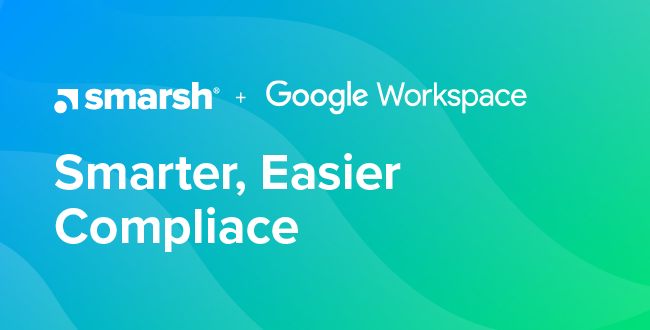

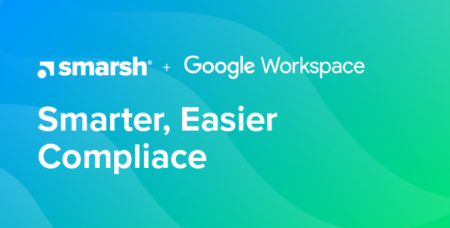

Subscribe to the Smarsh Blog Digest
Subscribe to receive a monthly digest of articles exploring regulatory updates, news, trends and best practices in electronic communications capture and archiving.
Smarsh handles information you submit to Smarsh in accordance with its Privacy Policy. By clicking "submit", you consent to Smarsh processing your information and storing it in accordance with the Privacy Policy and agree to receive communications from Smarsh and its third-party partners regarding products and services that may be of interest to you. You may withdraw your consent at any time by emailing privacy@smarsh.com.
FOLLOW US